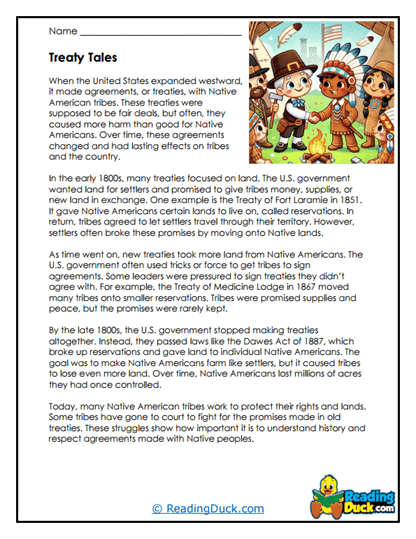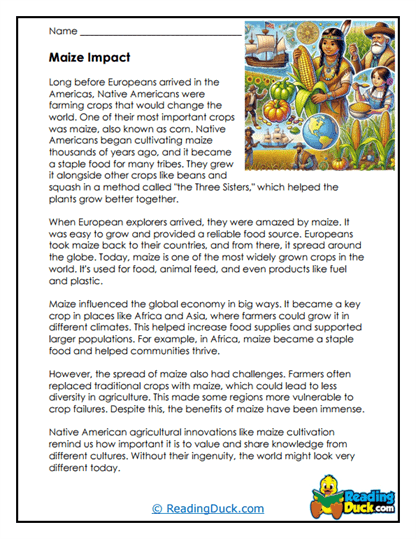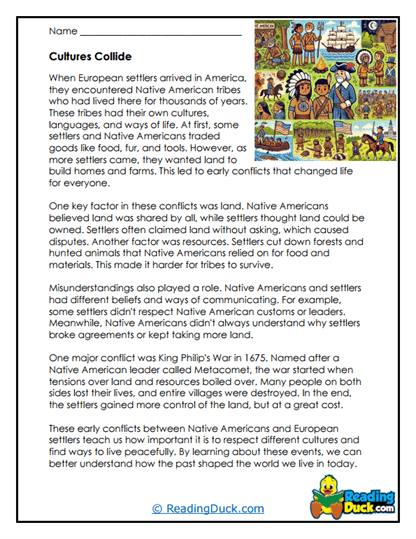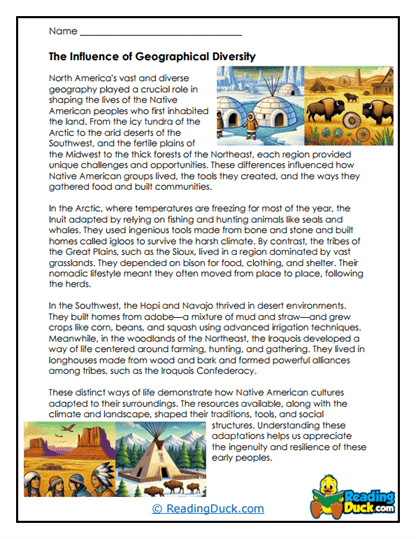Native Americans Worksheets
About Our Native American Worksheets
These worksheets cover a wide range of topics, including historical events, tribal traditions, geographic regions, and significant Native American figures. For teachers and homeschoolers, they provide structured, engaging, and age-appropriate materials that encourage students to gain a deeper understanding of Native American heritage. Whether used in a traditional classroom setting, homeschooling environment, or supplemental learning, these worksheets serve as a versatile resource for enhancing cultural awareness and knowledge.
One of the key benefits of Native American worksheets is their ability to present complex cultural and historical topics in a simplified, student-friendly manner. By breaking down significant events-such as the Trail of Tears, the impact of European colonization, or the importance of Native American contributions like agriculture and art-these worksheets help students grasp essential concepts while respecting the depth of Native American experiences. Activities like reading comprehension exercises, mapping tribal regions, and analyzing historical timelines foster critical thinking skills and contextual understanding. For younger learners, worksheets often incorporate games, coloring activities, and matching exercises to make learning both fun and informative.
Another significant advantage of using Native American worksheets is their flexibility to fit into a variety of learning settings and curricula. For instance, history teachers can integrate worksheets into lessons about U.S. history, while geography teachers may use them to explore the locations and environments of Native American tribes. In a homeschooling environment, these resources can be tailored to accommodate personalized pacing and areas of interest, allowing parents to delve deeper into specific tribes, historical eras, or cultural practices. Worksheets can also complement other materials like literature, videos, or art projects, helping students form a well-rounded understanding of Native American history and identity.
It’s important to ensure that Native American worksheets are culturally sensitive, accurate, and respectful of Indigenous perspectives. Teachers and homeschoolers should prioritize materials that have been created in collaboration with Native American communities or vetted for accuracy and representation. Using worksheets as a starting point to spark broader discussions about Indigenous sovereignty, resilience, and modern-day contributions is vital for avoiding stereotypes and promoting a more authentic understanding of Native American life. Encouraging students to engage critically with these materials will help them recognize both the historical struggles and ongoing legacies of Native American peoples.
Beyond academic value, Native American worksheets foster a sense of cultural empathy and awareness in students. By learning about diverse tribal traditions, languages, and worldviews, students develop a greater appreciation for the richness and diversity of Indigenous cultures. Worksheets that include activities like storytelling, exploring Native symbols, or learning traditional crafts allow students to connect more personally to the material. These experiences are crucial for building an inclusive and respectful classroom or homeschooling environment where cultural differences are celebrated and understood.
Their versatility, student-friendly structure, and ability to support critical thinking make them an invaluable addition to any curriculum. By choosing culturally appropriate and accurate resources, educators can foster deeper understanding, respect, and empathy among their students, ultimately promoting a more inclusive and informed perspective on Native American heritage. When used thoughtfully, these worksheets can serve as stepping stones for lifelong learning about Indigenous peoples and their enduring significance in history and contemporary society.
A Brief History of the Indigenous People of North America
Native Americans, the Indigenous peoples of North America, have lived on the continent for thousands of years, long before European settlers arrived. Archaeological evidence suggests that their ancestors migrated from Asia via the Bering Land Bridge during the last Ice Age, approximately 15,000 to 20,000 years ago. Over millennia, Native American societies developed complex and diverse cultures, adapting to their environments and building rich traditions. They established sophisticated communities, such as the agricultural societies of the Southeast, nomadic Plains tribes dependent on buffalo, and the intricate fishing and totem-carving traditions of the Pacific Northwest. Each tribe held unique languages, spiritual practices, and ways of life deeply rooted in their relationship with the land.
The arrival of Europeans in the late 15th and early 16th centuries marked a turning point in Native American history. Explorers and settlers brought not only new trade opportunities but also devastating diseases like smallpox, which decimated Indigenous populations who lacked immunity. Conflicts over land and resources escalated as European colonization expanded, leading to displacement, wars, and treaties that were often manipulated or broken. Notable events, such as the Trail of Tears in the 1830s, saw entire nations like the Cherokee forcibly removed from their homelands to reservations in distant territories. These injustices disrupted traditional ways of life, stripping Native peoples of their autonomy and ancestral lands.
In the late 19th and early 20th centuries, U.S. government policies further sought to assimilate Native Americans into Western culture. Initiatives like the Dawes Act of 1887 divided communal tribal lands into individual allotments, undermining traditional communal living. Native children were often taken to boarding schools, where they were forced to abandon their languages, customs, and identities. However, Native Americans resisted cultural erasure, preserving their heritage through oral traditions, art, and spiritual practices. The mid-20th century brought a resurgence of activism, particularly during the Red Power movement of the 1960s and 1970s, as Native leaders demanded civil rights, recognition of sovereignty, and the restoration of land and cultural dignity.
Today, Native Americans continue to play a vital role in the cultural and political fabric of the United States. While significant challenges remain, such as systemic poverty, health disparities, and ongoing land disputes, Native peoples are reclaiming their languages, traditions, and identities. Tribal governments and organizations work to protect Indigenous rights, resources, and self-determination. Additionally, Native American contributions to art, literature, politics, and environmental stewardship underscore their enduring resilience and cultural significance. The story of Native Americans is one of perseverance, a profound connection to the land, and the strength to thrive in the face of historical and ongoing adversity.









